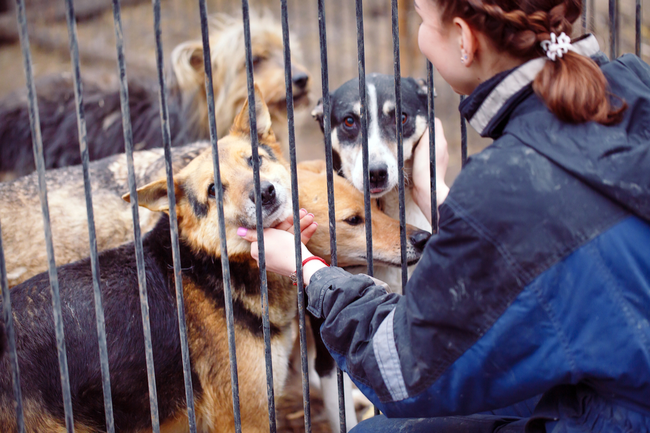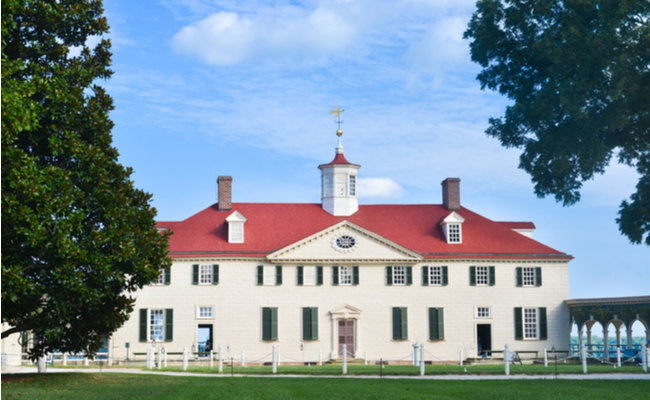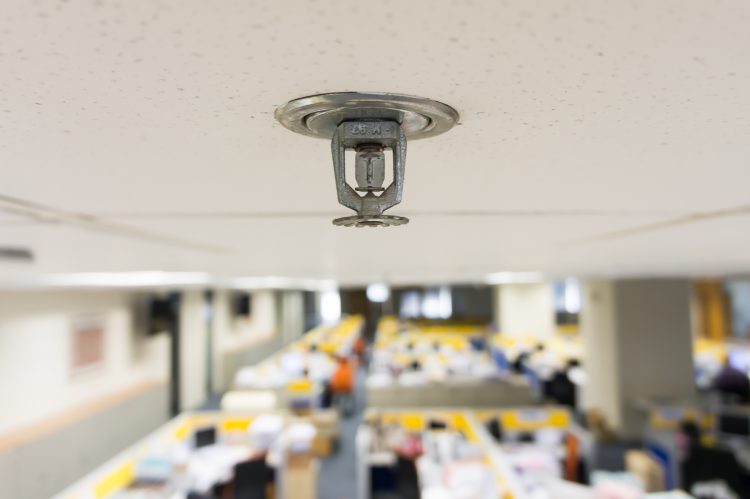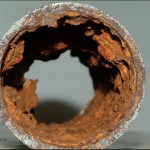-
January 27, 2020 by Total Fire and Safety

How important is the fire code for animal shelters? Deadly fires at kennels and animal shelters are not uncommon across the U.S. In the past year, over 100 dogs have died in kennel fires, including here near Chicago.
On the night of January 14, 2019, a West Chicago animal kennel went up in flames. Thirty-one dogs perished in the fire. The exact cause of the fire is unknown, but investigators determined no staff was present at the time and no working fire sprinklers were on property. The kennel did have fire detectors, but no one was around to hear them.
The tragedy prompted lawmakers to come up with legislation to ensure such an event never happens again. The new law, signed in August, went into effect January 1. The legislation requires kennels to be staffed 24/7 or have sprinkler systems or alarms that alert local fire departments.
When it comes to arming animal shelters with lifesaving equipment, Total Fire and Safety can help with the installation of …..
Wireless Fire Alarms
- Preferred by fire departments, they are more reliable than land-based systems for their quick and accurate response.
- They can save phone line costs.
- They reduce false alarms to fire departments
- Minimal and guaranteed wireless radio alarm monitoring fees
Fire Sprinkler Systems
- A working fire sprinkler is 96% effective in containing a fire.
- Monthly, quarterly, and annual inspections are necessary to ensure safety and keep your building fire code compliant.
- TFS uses the most up-to-date technology and thorough process to prevent sprinkler failure.
Working fire extinguishers can keep a small fire from getting out of control when someone is in the facility. Every business needs working fire extinguishers at the ready, and be trained to use them.
- A fire extinguisher is your first line of defense, 24/7.
- 30% of fire extinguishers are not in working order. We complete a 12-point inspection to make sure they are fire ready.
- On-site training is provided to guarantee proper employee usage.
All it takes is basic fire protection to save animal and human lives.
Illinois’ new fire code will help protect our furry friends from another senseless tragedy and prevent irreparable damage to lives, structures, and pocketbooks. Total Fire and Safety can equip your facility with the latest fire protection and help maintain the equipment installed. Give us a call today at (630) 960-5060.
Category: Business Safety, Fire Alarm Monitoring, Fire Extinguishers, Fire Extinguishers, Fire News, Fire Safety, Sprinkler Systems, Total Fire and Safety Tags: commercial fire safety, commercialfiresprinkler, employee training, fire and safety equipment, fire and safety solutions, fire safety in the news, Firesprinkler, Total Fire and Safety, wireless fire alarm monitoring, wireless fire alarms, wireless fire alarms for business | Comments Off on A New Fire Code for Animal Shelters in Illinois!
-
September 25, 2019 by Total Fire and Safety

If you have ever visited a historic building, what do you notice? Old documents, precious artwork, impeccable craftmanship, and… fire protection equipment? Hopefully your answer to the latter is no. Ideally, historic properties should still maintain the look and feel of an era gone by, but how do you do it and still install and maintain fire equipment that’s up to code?
Everyday commercial buildings are damaged by fires, causing a huge loss for any business. However, these damages can be repaired, sometimes improving the building from its previous structure. This is not the case for historic properties. The true extent of the loss is more significant than the cost of simply restoring the building. Any artifacts, documents, etc. that are lost represent a priceless piece of our heritage.
For the fire safety expert, the challenge of fire protection in a historic building presents three distinctive challenges:
Preserving the Historic Character
In order to protect historic buildings, sometimes structural engineers, preservation specialists and the building managers must get involved in addition to the fire protection experts (TFS). Together they design a solution that meets the needs of NFPA compliance without ruining the historic character of a building. For example, a historic door cannot be replaced with a fire-proof door, however installing sprinklers on either side of the door may be the answer.
Fire safety is prioritized even with our most beloved historic institutions. For example, currently there is a major renovation going on at Mount Vernon, the home of our first president, George Washington. Part of this extensive construction is major improvements to the fire suppression system. When all is said and done, fire safety for Mount Vernon and its visitors will be vastly improved for generations to come.
Total Fire & Safety’s client roster includes many historic buildings, especially in the Village of Downers Grove. We are proud to be able to keep visitors safe while maintaining the distinctive character of each building.
Staying Out of Sight
Ideally, fire protection systems must sufficiently protect a building but remain aesthetically pleasing. One common cause of concern is the fire sprinkler system. Not only do fire sprinklers damage a building’s contents, but they can deface the historic structure. The answer lies in coming up with creative solutions for fire sprinklers:
1. Use copper tubing vs. black or steel pipe to blend in with the building’s architecture.
2. Faux materials can be used that resemble the buildings time period to conceal fire sprinkler pipes.
3. Install painted fire sprinkler heads to match the area.
Another form of hidden fire protection commonly used in historic buildings is wireless fire alarms. Wireless alarms are an ideal, minimally invasive solution when needing to preserve the look and feel of a building. Other advantages to wireless fire alarms include:
- Wireless alarm monitoring provides faster response
- No cables are required for installation
- They eliminate false alarms, which can be costly for non-profit buildings
Updating Outdated Utilities
Many historic facilities have poor water pressure. This renders a fire sprinkler upgrade useless unless an underground line, additional line, or fire pump is installed. Total Fire & Safety can be helpful in making the right decision for any historic property.
Regardless of the fire protection systems installed, working to minimize the ignition of a fire should be a priority. Scheduling fire safety inspections annually is important to maintain a safe environment for the building and its occupants. Total Fire and Safety works not only to uphold the integrity of an historic building, but also provides the best fire protection equipment around. Give us a call today! 630-960-5060
Category: Business Safety, Fire Equipment Inspections, Fire exits, Sprinkler Systems, Total Fire and Safety Tags: commercial fire protection, commercial fire safety, commercialfiresprinkler, fire and safety equipment, fire and safety needs, fire and safety solutions, Firesprinkler, firesprinklerinspections, Total Fire and Safety, wireless fire alarm monitoring, wireless fire alarms, wireless fire alarms for business | Comments Off on Preserving Fire Safety in Historic Buildings
-
March 22, 2019 by Total Fire and Safety

In a commercial building, a fire sprinkler system is one of the most effective ways to control and extinguish fires. A well maintained fire sprinkler system can mean the difference between minor damage and total destruction.
A fire sprinkler system is a group of pipes and sprinkler heads located on ceilings or overhead. They slow the spread of fire or extinguish fire by releasing a spray of water. They are designed to cover as much area as possible to provide widespread coverage.
Most fire sprinklers are heat activated. When heat is detected, water is released and the fire alarm will likely be activated. Obviously, we need fire sprinklers to be as reliable as possible. So when and why do they fail?
The NFPA reports that there are an average of 660 reported sprinkler failures a year. However, with a proper working fire sprinkler 96% of the time they are effective in controlling most fires. The most common causes of sprinkler failures are:
- System shut-off
- Manual intervention
- Damaged components of fire sprinklers
- Lack of maintenance
- Inappropriate design of the fire sprinkler systems
Fortunately, most of these problems can be alleviated with proper, regular inspection of your fire sprinkler system by a trained professional. The NFPA suggests different intervals per year in order to ensure effectiveness.
Monthly inspection should ensure that
- Valves are accessible, labeled properly and are not leaking
- Wet gauges should be in good condition with proper water pressure detected
- Dry gauges should have normal water pressure with the quick opening device showing the same pressure as the dry pipe valve
Quarterly inspection should:
- Check for physical damage to the supervisory alarm and water flow alarm
- Dry test the system to check for valve issues
- Check that all fire department connections are accessible
- Check for leaks around the fire department connections
- Inspect pressure reducing valves (free of leaks, open position, maintaining downstream pressure)
Annual inspection should include all of the above, plus professional inspection by a certified professional for code compliance and tagging.
Well-maintained fire sprinkler systems are paramount to your building safety and occupants. The professional at Total Fire and Safety is dedicated to keeping you safe and in code compliance. Give us a call today to schedule an inspection at 630-960-5060.
Category: Business Safety, Fire Safety, Sprinkler Systems, Total Fire and Safety Tags: commercial fire safety, commercialfiresprinkler, fire safety, Firesprinkler, firesprinklerinspections, sprinkler, sprinklerinspections | Comments Off on Will your fire sprinkler system work when the heat is on?
-
February 13, 2018 by Total Fire and Safety

When a ballistic missile warning sounded in Hawaii recently, few people had an emergency preparedness plan in place. Instead, people were sent into panic. Parents threw their children into sewers, people caught in traffic ran from their cars, some Googled “how to shelter from a nuclear bomb.” We can look at this now in hindsight and think we would have handled it differently. But would we? Whether it’s a ballistic missile, tornado, or a fire it is important to have an emergency preparedness plan.
When a fire occurs in the office, people are likely to react the same way. However, if employees understand what’s going on, what to do, where to go and how to get there, panic will not set in. A fire emergency preparedness plan will help employees feel in control during an emergency and do what needs to be done. .
One way to help employees respond appropriately in an emergency is to remember to REACT:
- R-Remove persons from danger. Know the location of fire exits and that they are not blocked. Steer clear of elevators and equip them with warning signs: in case of fire do not use. They can trap people and must be available to firefighters. Figure out a designated meeting area for employees, safe from danger. Make a procedure in case of entrapment in the building. Assign someone to always keep a list of employees and visitors, so you can begin a roll call once in the safety area.
- E-Ensure doors and windows are closed. Keep doors and windows closed to prevent spreading of the fire.
- A-Activate building alarm. Make sure alarms or a warning signal are working properly and that your employees are familiar with the sound. Most importantly, have regular fire drills.
- C-Call the fire department. Never investigate the fire on your own. Time is minimal for your employees to reach safety quickly.
- T-Treat all fires as dangerous.
A fire preparedness plan also includes having the right equipment and in working order too. Does your place of business have everything it needs to survive a fire? And has it been inspected lately? Know that your facility is up-to-date on the systems it needs to have ready to go in case of a fire:
Don’t forget that the second part of having the right fire equipment is having employees that can operate the equipment safely. Total Fire and Safety offers training courses for employees on all our technologies and equipment. Having employees properly trained improves chances of putting out small fires.
As you can see there are many safety precautions to include in a fire preparedness plan. If your building does not have the proper safety equipment or it is not up to date, there could be catastrophic consequences. Total Fire and Safety always has the well-being of the customer in mind as we complete our inspections. We never give less than 100 precent because you can never be too prepared for a fire. Contact us at: 630.960.5060
Category: Business Safety, Fire code violation, Fire Equipment Inspections, Fire exits, Fire Extinguishers, Fire Extinguishers, Fire Safety, Sprinkler Systems Tags: commercial fire protection, commercial fire safety, commercialfiresprinkler, emergency exit lights, emergency plan, emergency preparedness, employee training, Extinguishertraining, fire safety in the news | Comments Off on Fire in the Office! Do You Have a Fire Emergency Preparedness Plan?
-
May 19, 2015 by Total Fire and Safety
Have you heard of MIC?

MIC is a microorganism that could be affecting your commercial fire protection, more specifically, the pipes in your sprinkler system. MIC stands for Microbiologically Influenced Corrosion, and is becoming increasingly prevalent nationwide.
There are three main causes for the rising cases of MIC in commercial fire sprinkler systems: changes in pipe materials, the way we disinfect the water, and increased maintenance activity in sprinkler systems. The MIC microorganisms do not directly cause the damage, however their biological processes produce different chemicals that accelerate corrosion, or rusting in pipes. MIC is more common in warm weather areas, but incidences have now been reported nationwide, even in in Illinois. It is estimated that North American companies spend about $1.5 billion per year on chemical treatments to combat MIC.
Early detection and preventative treatment for MIC is key to preserving your sprinkler system. So what can you do?
1. Piping should be flushed in new systems to remove oil and debris, which is potential food for microorganisms. Newer systems are designed to be flushed easily.
2. Test and drain systems as infrequently as possible, because fresh water can bring in more food for the microorganisms.
3. If your pipes are especially MIC prone, you may consider thicker wall piping.
4. Use water tests, but don’t rely on them solely to detect MIC leaks. Watch for leaks at the joints of the pipes, but keep in mind that water tests are not conclusive because microorganisms are always present in small amounts. Water tests are, however, the first step to identifying MIC as a problem in your system.
At Total Fire & Safety, we are experts in early detection as well as potential treatment options and solutions for MIC in your sprinkler system. If you would like a check for MIC, or if a water test has confirmed MIC in your sprinkler system, contact us to find the most cost effective way to treat the problem. We will provide the total solution!
Category: Sprinkler Systems Tags: commercialfiresprinkler, Firesprinkler, firesprinklerinspections, MIC, sprinkler, sprinklerinspections | Comments Off on How to Treat and Prevent MIC in Commercial Sprinkler Systems
-
May 8, 2013 by Total Fire and Safety
Properly installed and maintained automatic fire sprinkler systems help save lives. Because fire sprinkler systems react so quickly, they can dramatically reduce the heat, flames and smoke produced in a fire.
Superior field service is a fundamental strength of Total Fire & Safety and has made us the preferred service provider for thousands of customers. We offer the full range of scheduled fire sprinkler inspections and maintenance services, as well as 24-hour/365-day emergency service.
We service sprinkler systems in commercial structures. We also test fire hoses. Our technicians are highly trained and state certified. Our service trucks carry everything needed to get the job done right. Various parts of fire sprinkler systems must be tested at different intervals per NFPA 25.
Below are some of the items tested during an inspection:
- Are systems functional upon arrival?
- Are gauges good and reading correctly?
- Are main control valves open?
- Do control valves operate through full range?
- Valves are lubricated as needed.
- Are there extra sprinkler heads in cabinet?
- Is the building heated in wet sprinkler area?
- Are the water motor and gong functional?
- Is the electric alarm test satisfactory?
- Are the alarm devices functional & free of damage?
- Is stock and storage 18″ below the sprinklers?
- Alarm time delayed in seconds?
- More testing depending on system type
Category: Fire Safety, Sprinkler Systems, Total Fire and Safety Tags: commercialfiresprinkler, firesafety, Firesprinkler, firesprinklerinspections, lifesafety, sprinkler, sprinklerinspections | Comments (1)
|

|
|
|
|
|
|

 Facebook
Facebook
 Instagram
Instagram
 LinkedIn
LinkedIn




